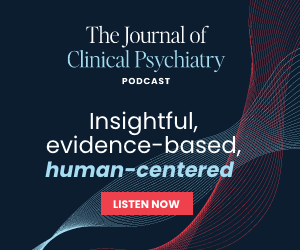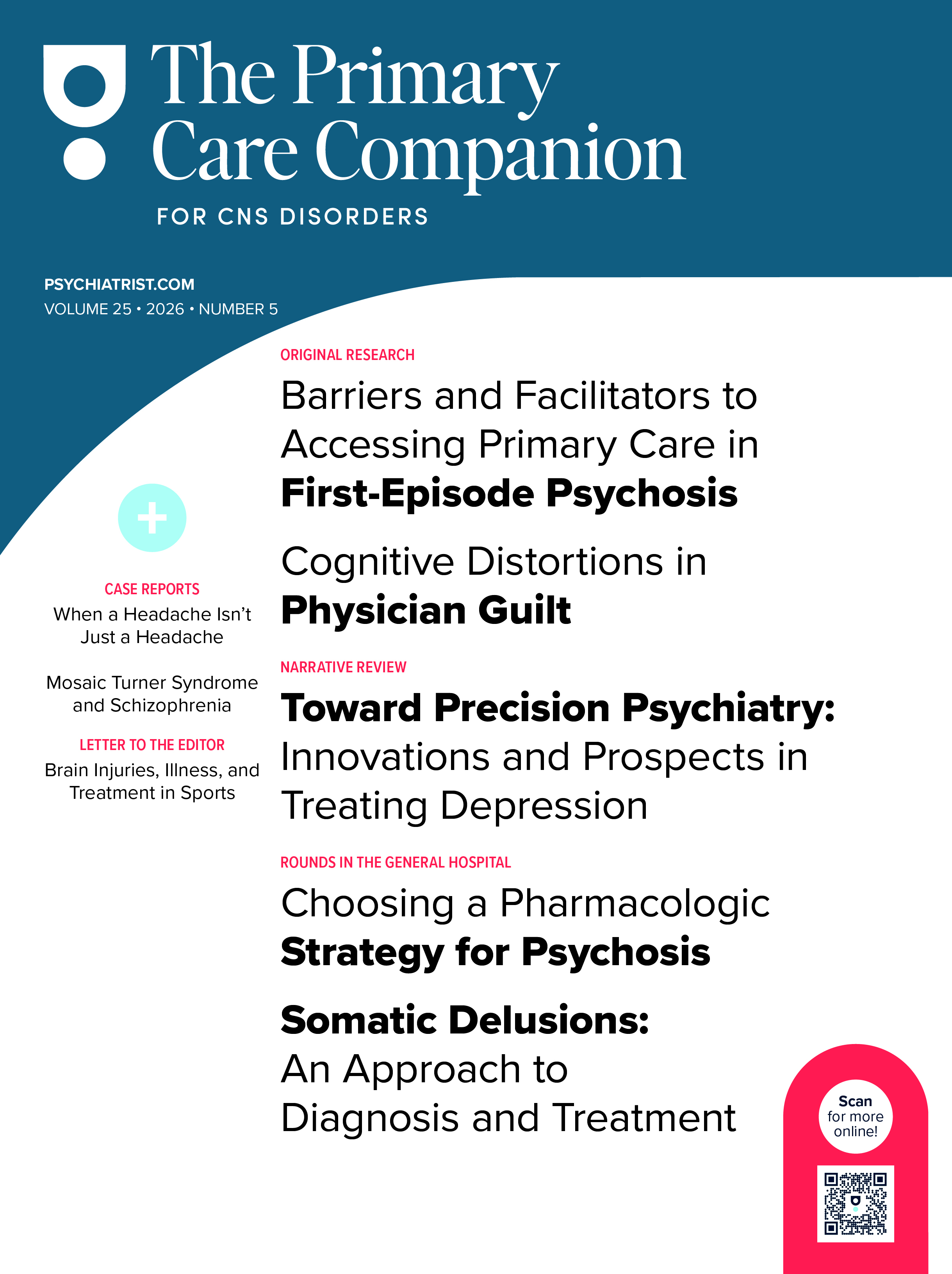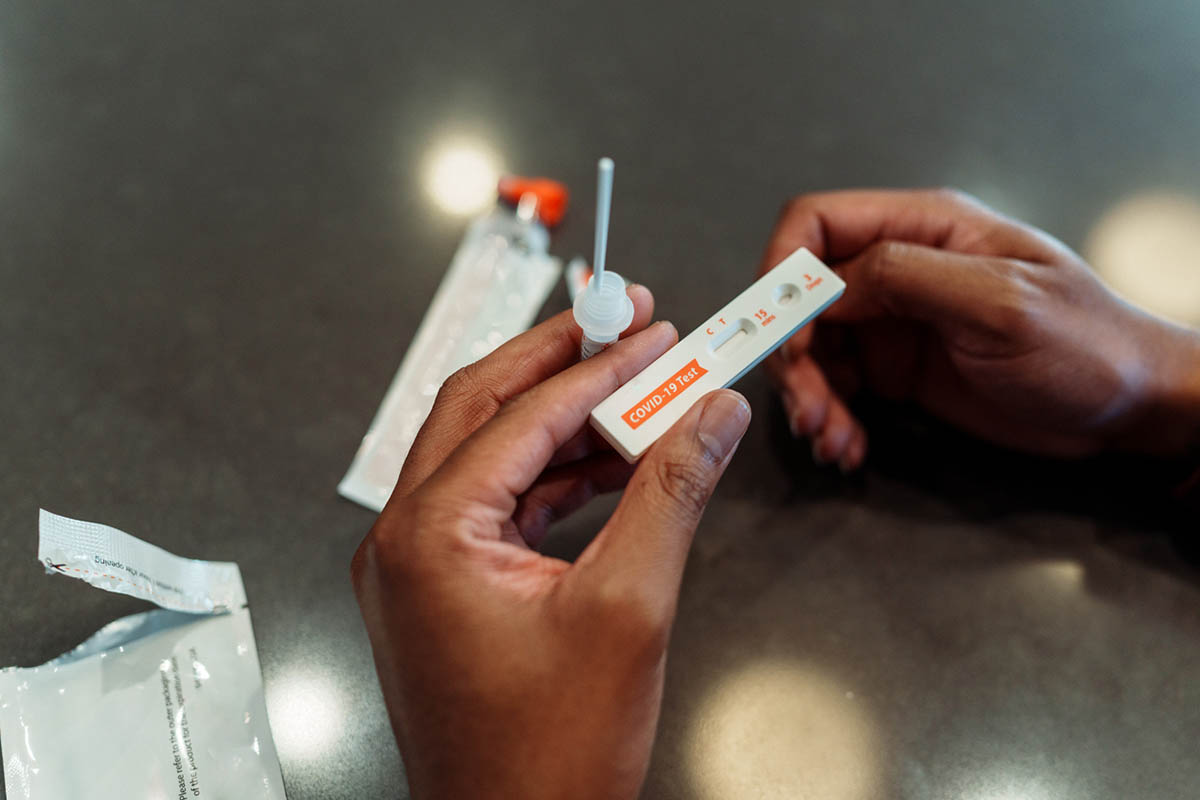Panic disorder (PD) is described as recurrent, untriggered panic attacks with at least 1 of the attacks followed by 1 month or more of concern about future attacks and/ or significant maladaptive behavioral changes in relation to the attacks.1 PD is a chronic, recurrent disease that affects 1%–3% of the population; some individuals improve with treatment, but few achieve lasting remission.2–4 There is no standardized definition of treatment-resistant PD; several authors utilize criteria of no response to at least 1 to 2 adequate 8- week treatment trials with medications effective for PD.5,6 We present the case of a patient with treatment-resistant PD who when treated with pindolol experienced a significant reduction in the frequency and severity of his attacks.
Case Report
A 36-year-old man with generalized anxiety disorder, major depressive disorder, and PD was seen as an outpatient in July 2020. The patient was reporting 2 to 3 moderate attacks per day and 2 to 3 severe attacks per week. He was being managed with nortriptyline 125 mg nightly, buspirone 30 mg twice/d, ziprasidone 40 mg twice/d, and lorazepam 0.75 mg twice/d. Previously, it had been attempted to increase lorazepam 1 mg twice/d, but the patient reported he was too sedated. The patient reported trials with several first-line medications but failed them, as well as several others that seemed to alleviate symptoms, but he was unable to tolerate the medications due to various side effects. Bupropion and venlafaxine successfully managed the patient’s mood symptoms but heightened anxiety. Quetiapine was trialed, but the medication was highly sedating. Aripiprazole was attempted as an augmenting agent for anxiety but tapered a few months later due to increased anxiety and depression. Hydroxyzine 25 mg was self discontinued due to “mental fogginess” and concentration issues. Temazepam 7.5 mg resulted in hypersomnia.
At the initial visit, pindolol 2.5 mg 3 times daily was initiated. This dose was increased to 5 mg 10 days later, as the patient reported a reduction in attack severity. One month after the initiation of pindolol (August 2020), the patient reported a decrease in the frequency of attacks to 1 to 2 times daily, and pindolol was titrated to 7.5 mg 3 times daily. In September 2020, the patient reported significant efficacy of pindolol in reducing the severity of his attacks. However, he continued to experience functional limitations. In October 2020, there was an increase in attacks from prior visits, as the patient noted he was regularly forgetting his midday dose of pindolol. Pindolol was thus titrated to 15 mg twice/d. Four months after initiation (November 2020), the patient reported a reduction in the frequency of attacks, and pindolol was increased to 20 mg twice/d. Following this titration, the patient experienced 4 severe panic attacks over the subsequent 2 weeks, with 1 day entirely free of panic attacks. Lorazepam was tapered gradually over months afterward. Titration of other medications is unknown. Over 1 year of this regimen, the patient demonstrated consistent improvement, ultimately achieving remission.
Discussion
Pindolol is a β-adrenergic and 5-HT1A receptor partial agonist.7 Its role as an augmenting agent in antidepressant and treatment refractory PD therapy has been investigated, with particular attention paid to pindolol’s role as a serotonergic modulator.5,8–12 Clinical effects have been theorized to be related to pindolol’s antagonist activity at presynaptic and somatodendritic 5-HT1A receptors, which serve as inhibitory autoreceptors that inhibit serotonin release, of which pindolol appears to have a unique stronger preference compared to other β-blockers.8–11,13,14 This preference may contribute to its effectiveness in alleviating symptoms of panic attacks. This case and the limited controlled trials analyzing pindolol efficacy in PD underscore the need for further research into pindolol as an augmenting panicolytic, with appropriate dosing guidelines.
Article Information
Published Online: November 28, 2024. https://doi.org/10.4088/PCC.24cr03789
© 2024 Physicians Postgraduate Press, Inc.
Prim Care Companion CNS Disord 2024;26(6):24cr03789
Submitted: June 12, 2024; accepted August 29, 2024.
To Cite: Vaz-Ayes M, Sarmiento B, Gunther M, et al. Pindolol use for treatment-refractory panic disorder. Prim Care Companion CNS Disord. 2024;26(6):24cr03789.
Author Affiliations: College of Medicine, University of Florida, Gainesville, Florida (Vaz-Ayes); College of Medicine, University of Central Florida, Orlando, Florida (Sarmiento); Department of Psychiatry, Stanford University, Stanford, California (Gunther); Department of Psychiatry, University of Florida, Gainesville, Florida (Jiang).
Corresponding Author: Melissa Vaz-Ayes, BS, College of Medicine, University of Florida, Gainesville, 1208 SW 16th Ave, Apt D, Gainesville, FL 32601 ([email protected]).
Relevant Financial Relationships: None.
Funding/Support: None.
Patient Consent: Consent was received from the patient to publish this case report. Patient information, including dates, has been de-identified to protect patient privacy and anonymity.
References (14)

- American Psychiatric Association. Diagnostic and Statistical Manual of Mental Disorders. 5th ed. American Psychiatric Publishing, Inc; 2013.
- Kessler RC, Chiu WT, Demler O, et al. Prevalence, severity, and comorbidity of 12-month DSM-IV disorders in the National Comorbidity Survey Replication. Arch Gen Psychiatry. 2005;62(6):617–627. PubMed CrossRef
- Kessler RC, Chiu WT, Jin R, et al. The epidemiology of panic attacks, panic disorder, and agoraphobia in the National Comorbidity Survey Replication. Arch Gen Psychiatry. 2006;63(4):415–424. PubMed CrossRef
- Roy-Byrne PP, Cowley DS. Course and outcome in panic disorder: a review of recent follow-up studies. Anxiety. 1994;1(4):151–160. PubMed CrossRef
- Freire RC, Zugliani MM, Garcia RF, et al. Treatment resistant panic disorder: a systematic review. Expert Opin Pharmacother. 2016;17(2):159–168. PubMed CrossRef
- Perna G, Caldirola D. Management of treatment resistant panic disorder. Curr Treat Options Psychiatry. 2017;4(4):371–386. PubMed CrossRef
- Joseph SS, Lynham JA, Molenaar P, et al. Intrinsic sympathomimetic activity of (-)-pindolol mediated through a (-)-propranolol-resistant site of the beta1- adrenoceptor in human atrium and recombinant receptors. Naunyn Schmiedebergs Arch Pharmacol. 2003;368(6):496–503. PubMed CrossRef
- Newman-Tancredi A, Chaput C, Gavaudan S, et al. Agonist and antagonist actions of (-)pindolol at recombinant, human serotonin1A (5-HT1A) receptors. Neuropsychopharmacology. 1998;18(5):395–398. PubMed CrossRef
- Artigas F, Adell A, Celada P. Pindolol augmentation of antidepressant response. Curr Drug Targets. 2006;7(2):139–147. PubMed CrossRef
- Whale R, Terao T, Cowen P, et al. Pindolol augmentation of serotonin reuptake inhibitors for the treatment of depressive disorder: a systematic review. J Psychopharmacol. 2010;24(4):513–520. PubMed CrossRef
- Kleeblatt J, Betzler F, Kilarski LL, et al. Efficacy of off label augmentation in unipolar depression: a systematic review of the evidence. Eur Neuropsychopharmacol. 2017;27(5):423–441. PubMed CrossRef
- Hirschmann S, Dannon PN, Iancu I, et al. Pindolol augmentation in patients with treatment-resistant panic disorder: a double-blind, placebo-controlled trial. J Clin Psychopharmacol. 2000;20(5):556–559. PubMed CrossRef
- Rabiner EA, Gunn RN, Castro ME, et al. beta-blocker binding to human 5-HT(1A) receptors in vivo and in vitro: implications for antidepressant therapy. Neuropsychopharmacology. 2000;23(3):285–293. PubMed CrossRef
- Fernandes E, Gomes A, Costa D, et al. Pindolol is a potent scavenger of reactive nitrogen species. Life Sci. 2005;77(16):1983–1992. PubMed CrossRef
Please sign in or purchase this PDF for $40.




